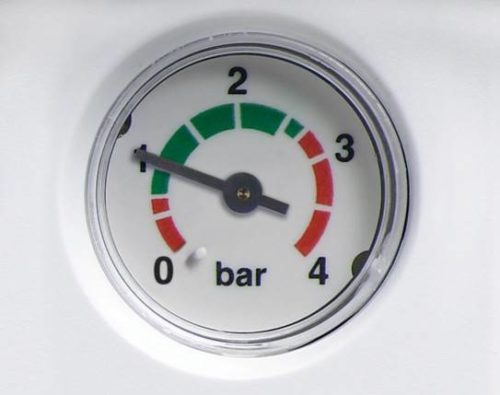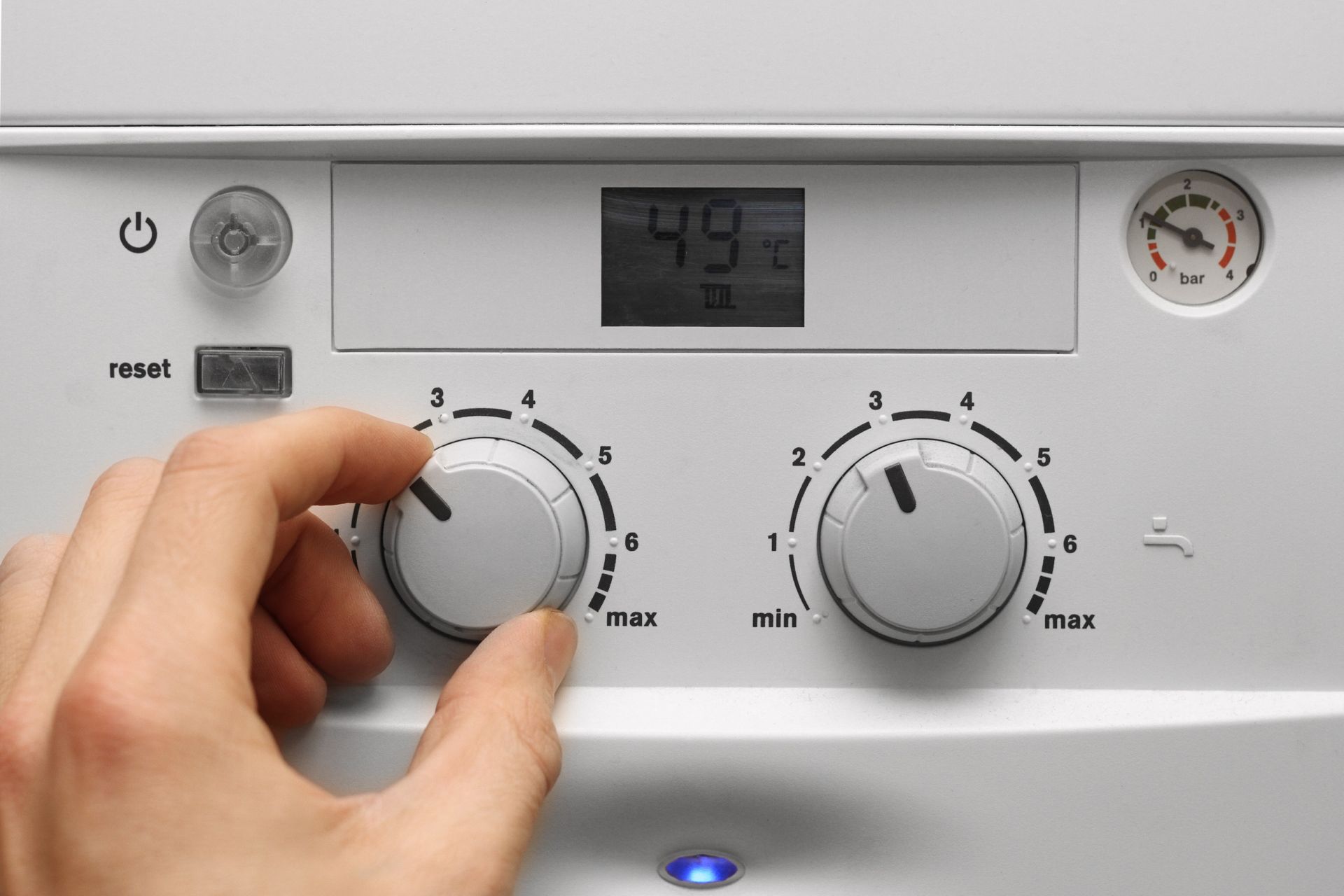What is boiler water pressure?
If you have a gas central heating boiler, the pipes and radiators are filled with water. The water in this system is heated by the boiler and circulated to warm the rooms. A minimum amount of water is required for the system to operate—the more water in the system, the greater the pressure, just like a car tyre.
Why do I need to check the pressure?
Over time your boiler will need topping up with water, just like your car does. This will maintain the recommended optimal operating pressure. Typically, most boilers will require topping up once or twice a year. If it is more frequent, there may be a leak somewhere in the system.
How can I check my boiler pressure?
On the front of your boiler, you should find a water pressure gauge like in the diagram below. It may be behind a flap or underneath on some older models.
If you can't find the pressure gauge, look in the instruction manual, which can be found online by searching the make and model.

What should the pressure be?
For most models, the pressure should be between 1-2 bars. The ideal pressure is typically 1.5 bars and is often indicated as a range in green on the gauge. The red zones on the gauge often indicate low or high pressure.
Please note the pressure will increase slightly when the system is running, and the water is hot.
What happens when the pressure is too low or high?
Most systems are designed to shut down when the pressure is too low or too high. No hot water or heating will be produced in these circumstances. This prevents damage to the system. When this happens, most boilers will display an error code, or lights will flash.
You can find out what error codes mean by searching the fault online, along with the boiler make and model.
How to re-pressurise your boiler
Re-pressuring your boiler when the pressure is too low simply means allowing more water to enter the system. Most modern combi boilers rely on a filling loop to do this. The process is slightly different for a Worcester Bosch boiler (see below).
Please refer to the manufacturer's instructions for your boiler to ensure you are topping up the pressure correctly. Your manufacturer instruction manual is also readily available online by typing the make and model into Google.
- Switch off the boiler and allow it to cool down.
- Find the filling loop – this is a flexible, silver pipe with a valve at either end. Double-check that it's securely attached to the boiler's pipes.
- Open up both valves so that they're in line with the pipe to allow cold mains water into the system. You should be able to hear it.
- Wait for the water pressure to reach between 1 and 1.5 on the pressure gauge.
- Once it has, shut off both valves one after the other.
- Switch the boiler back on and, if needed, press the reset button.
- Undo both ends of the filling loop and remove from the pipes. Be careful to catch any water spillage and remember to keep the loop in a safe place.
How to re-pressurise your Worcester Bosch boiler
While other combi boilers use a filling loop, some Worcester Bosch boilers use an internal filling key.
- Remove the hatch on the underside of your boiler – you'll find the internal filling key clipped inside.
- Look up into the boiler to find the filling link. This is a small hole just to the right of a white square which the key will slot into.
- Firmly push the key into the filling link until the arrow on the side of the key almost meets the black plastic.
- Turn the key anti-clockwise until the arrow is facing you.
- Then gently turn the white square clockwise to allow cold mains water into the system. You should be able to hear it.
- Wait for the water pressure to reach between 1 and 1.5 on the pressure gauge.
- Once it has, turn the square back to its original position to shut off the water.
- Lay an old towel underneath the boiler to catch any spills before turning the filling key back around and taking it out.
- Dry off the key and pop it back into the tray before putting the hatch back in place.
- Switch the boiler back on and, if needed, press the reset button.
What to do if your boiler pressure is too high
You need to identify why you have a high-pressure boiler. The common culprits:
Pressure valves:
Check underneath your boiler to ensure the valves are closed tightly as they may have come loose accidentally and caused your boiler pressure to become too high.
Radiators:
Bleeding your radiators can help to reduce the pressure load. If you have noticed that the boiler pressure is too high when the heating is on, you need to be careful of the hot water inside.
All these guides will be easy to find on YouTube by typing in the make of your boiler.










